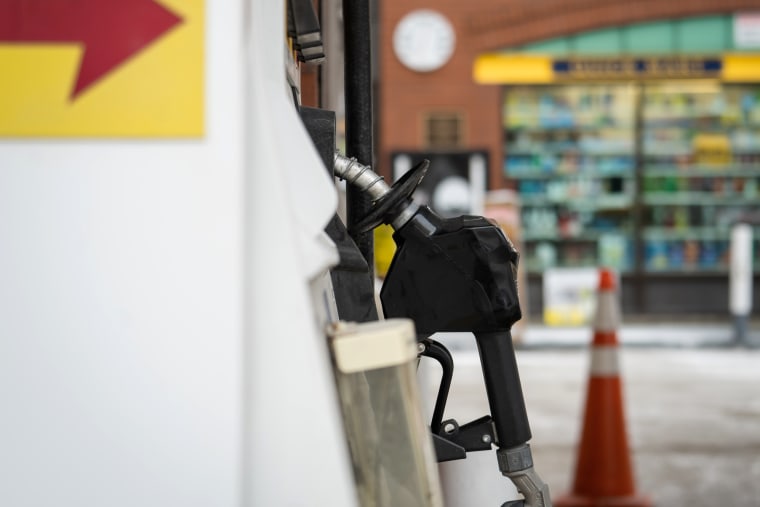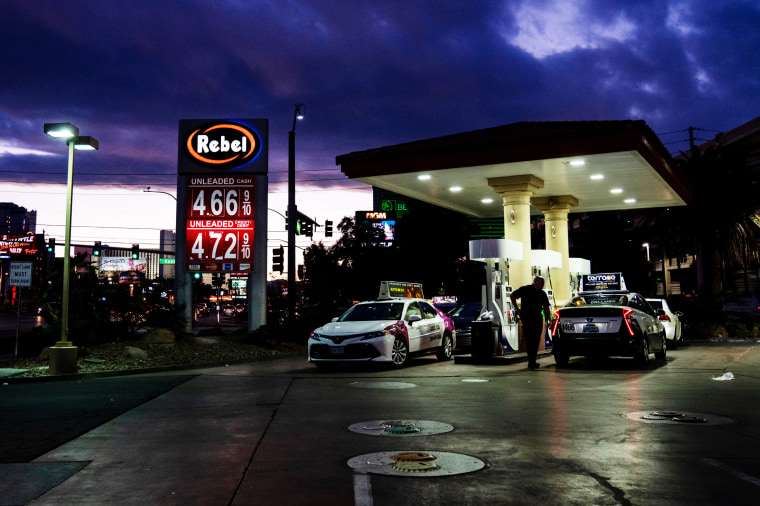Danny Nordman owns three gas stations in the West Texas metro area of Midland-Odessa. And with gas prices soaring to record levels, it would be easy to think Nordman is just sitting back watching the money roll in.
Actually, he’s watching it roll out.
“We’ve raised the price of fuel as little as we could [and] absorbed the price increases to cut into our profits,” he said. “On Friday, the wholesale price went up 21 cents. … Our price at the pump went up 11 cents.”
And it wasn’t the first time the math went in the wrong direction.
“We have not made profit on fuel in probably nine days. We’ve sold fuel essentially at cost, and the thing about selling something at cost is that it’s never taking into account the incidentals,” he said, such as credit card processing fees and wear and tear on his equipment.
“It’s a popular misconception that store owners are all wealthy,” Nordman said. “Your fuel is a volume thing. You’ve got to sell a lot of fuel to make a little bit of money off it.”
“A little” as in 15 cents a gallon on average, according to the National Association of Convenience Stores. About 80 percent of the gas purchased in the U.S. is sold by convenience stores like Nordman’s.
The companies making the most money when oil prices go up tend to be the ones that do the exploration and extraction, said Peter McNally, an energy analyst with the research firm Third Bridge. “Retail gasoline typically has the lowest margins.”
But pulling the oil out of the ground is just the first step and just one component of the cost. Crude accounts for roughly half the cost of a gallon of gas. When the price of oil is at $100 a barrel (which is 42 gallons), crude accounts for about $2.40 per gallon. The oil is then refined into gasoline and transported to the gas station, which adds more to the cost. Next comes the government. The price drivers pay at the pump includes about 60 cents per gallon, on average, for federal and state taxes.
Station owners have to refill their underground storage tanks fairly often, so they have to sell gas at a price that will cover the cost of their next order. “The problem is … it doesn’t matter what the 10,000 gallons of fuel costs in the ground. It matters what it’s going to cost to replace the next load,” Nordman said.
And with the uncertainty around the Ukraine war creating wild swings in the price of oil from day to day, price-planning is tough.
"If there was a time to not want this situation — from a purely gas price standpoint — this is the time,”said Jeff Lenard, a spokesman for the National Association of Convenience Stores.
The supply crunch that’s driving prices to record levels is arriving as more drivers are hitting the road for spring break, the office and eventually summer vacations.
Also arriving: summer-blend gasoline, which typically gets phased into the system around now. Summer-blend, which is formulated to reduce smog, generally costs retailers 10 to 30 cents more per gallon, which they could be hard-pressed to pass along to consumers.

For gas station owners like Nordman, the real money will almost never come from the pump.
Station owners make most of their profits in their stores, on sales of food and drinks, as well as alcohol where sales are legal.
“The idea is to have a very competitive gas price, and when they go in the store, you can make money off that transaction,” Lenard said. He said a recent survey by the convenience store association found that almost 60 percent of people who come for gas also go inside the store.
Nordman said he hasn’t noticed customers’ curbing their spending at his stores when they fill up, but he’s bracing for it. “Eighty percent of the transactions are credit card transactions. … It will eventually hit the consumer when that credit card bill comes in,” he said. “That’s when I think we will see it.”
And station owners are being hit by inflation and product shortages just like small businesses everywhere. Wholesale prices for coffee to toilet paper to beef jerky have soared over the past several months, and labor prices are also climbing.
“On pretty much everything, we’ve seen a 20 percent increase on our costs,” Nordman said. He said some snack food makers were adjusting their wholesale prices so often that he stopped putting price tags on the items.
But he’s found a way to offset some of the price hikes: fire up the grill. The markup on hot foods like pizza and burgers can be as high as 30 percent. “I want the guy that’s buying fuel to come in and buy a hamburger from me,” he said. “A good kitchen person will have onions on that grill whether they’ve got customers or not.”
Normand’s been in the business for seven years, and he said his stores have built a good reputation as places to get a hot meal, which keeps his customers coming back. “That’s how the mom-and-pop businesses have to distinguish themselves from the corporate stores,” he said. “In the gas station business, you need to be in the hot food business.”
